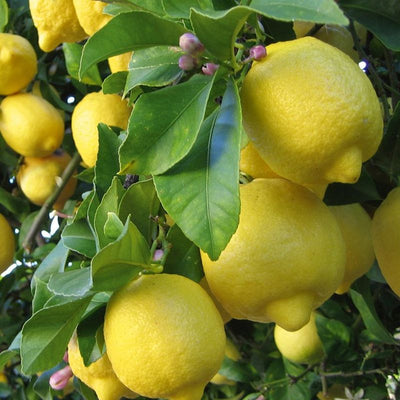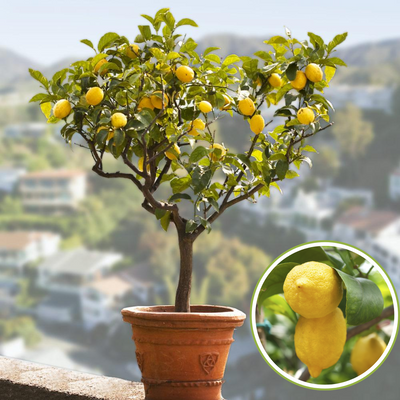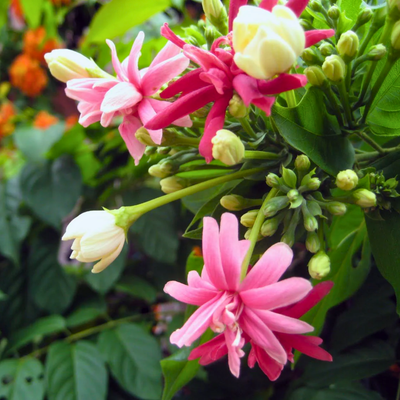
Carmona Pre Bonsai Wax Malpighia 3-Year-old Live Plant
Guaranteed Safe Checkout
Green Paradise Offers Carmona
Pre-Bonsai Wax 3 Years Old Plant
About Bonsai Wax Carmona Plant
Bonsai Carmona Pre Wax, also known as Fukien tea tree (Carmona retusa), is a popular choice among bonsai enthusiasts due to its small leaves, attractive flowers, and ability to tolerate indoor conditions. It is native to Southeast Asia, particularly China, Taiwan, and Malaysia.
Here are some key characteristics and care guidelines for the Bonsai Pre Carmona plant:
Appearance:
-
The Carmona bonsai typically has a compact and bushy appearance.
-
It features glossy, dark green leaves that are oval or lanceolate in shape, and they are usually small in size.
-
The tree can produce small, white, or off-white flowers with a pleasant fragrance.
Indoor suitability:
-
One of the reasons why the Carmona bonsai is popular is its ability to thrive indoors.
-
It can tolerate lower light levels, making it suitable for indoor environments such as homes and offices.
-
However, it still requires sufficient light to thrive, so placing it near a window with filtered sunlight is ideal.
Watering:
-
Carmona bonsai trees prefer slightly moist soil. It is essential to water the tree regularly,
-
allowing the soil to dry slightly between watering sessions.
-
Still, be conservative and not overwater, as inordinate humidity can lead to root spoilage.
-
It's a good practice to check the moisture level by feeling the top inch of the soil before watering.
Humidity:
-
Carmona bonsai trees appreciate higher humidity levels.
-
Misting the leaves with water or placing the bonsai on a humidity tray filled with water and pebbles can help maintain adequate humidity around the tree.
Pruning and shaping:
-
Regular pruning and shaping are necessary to maintain the desired bonsai form.
-
Carmona bonsai can be trained using various techniques such as wiring and pinching.
-
Trimming back new growth to maintain the desired shape is also important.
Fertilization:
-
Bonsai Carmona plants benefit from regular fertilization during the growing season,
-
typically from spring to fall. You can use a balanced, water-soluble fertilizer specifically designed for bonsai or a general-purpose houseplant fertilizer.
-
Follow the instructions on the toxin packaging for the proper operation and lozenge
Repotting:
-
Carmona bonsai trees should be repotted every two to three years to refresh the soil, promote root health, and maintain the bonsai's size.
-
The ideal time for repotting is typically during the spring season, just before new growth emerges.
Pest and disease control:
-
Carmona bonsai trees are generally hardy, but they can be susceptible to common pests like aphids, scale insects, and spider mites.
-
Regular inspection of the leaves and stems can help identify and treat any pest infestations promptly.
-
also, furnishing good air rotation and avoiding overwatering can help fungal conditions.
Remember, each bonsai tree is unique, and the care requirements may vary slightly depending on its specific conditions and the climate you are in. Observing your Carmona bonsai regularly and responding to its needs promptly will contribute to its health and beauty.
How To Grow Carmona Bonsai
Growing a Carmona bonsai, also known as Fukien tea bonsai (Carmona retusa), requires careful attention and specific care techniques.
Here's a step-by-step guide on how to grow Carmona bonsai:
Choosing the right tree:
- Select a healthy and well-formed Carmona bonsai tree from a reputable nursery or bonsai shop.
- Look for a tree with a well-balanced trunk, good root structure, and dense foliage.
Placement:
- Carmona bonsai thrive in bright, filtered light.
- Place your bonsai in a location where it can receive several hours of sunlight each day, but avoid direct sunlight during the hottest part of the day.
- You can also use artificial grow lights to supplement light if needed.
Temperature and humidity:
- Carmona bonsai prefer warm temperatures between 65°F and 75°F (18°C and 24°C). They also require higher humidity levels.
- To increase humidity, you can place your bonsai on a tray filled with water and pebbles.
- Ensure that the bottom of the bonsai pot is above the waterline to prevent root rot.
Watering:
- Proper watering is crucial for Carmona bonsai.
- They prefer slightly moist soil but should not be overwatered.
- Regularly check the soil by burying your finger about an inch deep.
- If it feels dry, water the bonsai thoroughly until water drains out of the bottom of the pot.
- Keep the soil from getting completely dry or flooded.
Soil and repotting:
- Carmona bonsai require well-draining soil.
- Use a bonsai-specific soil mix or a mixture of bonsai soil, perlite, and organic compost.
- Report your bonsai every 2-3 years, preferably in spring, to refresh the soil and prune the roots.
Pruning and shaping:
- Regular pruning is necessary to maintain the shape and size of your Carmona bonsai.
- Trim back new growth to maintain the desired shape and remove any dead or unhealthy branches.
- Prune the roots during repotting to control their growth and maintain a healthy root system.
Fertilization:
- Feed your Carmona bonsai with a balanced, water-soluble bonsai fertilizer during the growing season (spring and summer).
- For the right dilution and frequency, adhere to the manufacturer's instructions. Reduce or stop fertilizing during winter when the tree is dormant.
Pest control:
- Carmona bonsai are susceptible to pests such as aphids, mealybugs, and scale insects.
- Regularly inspect your bonsai for signs of pests and treat them promptly using appropriate insecticides or by manually removing the pests.
- Avoid using harsh chemicals that may harm the bonsai.
Winter care:
- During winter, when temperatures drop, protect your Carmona bonsai from frost.
- Move it to a sheltered location, such as a greenhouse or a well-lit indoor spot.
- Reduce watering and avoid fertilizing until spring when the tree starts actively growing again.
Observing and adjusting:
- Pay close attention to your Carmona bonsai's health and appearance.
- Observe any signs of stress, such as yellowing leaves or weak growth, and adjust the care accordingly.
- Bonsai care is a continuous learning process, so be patient and adaptable.
By following these guidelines and providing proper care, you can enjoy the beauty of a thriving Carmona bonsai tree in your home or garden. Remember that each bonsai is unique, and it may require slight adjustments based on its specific needs.


















